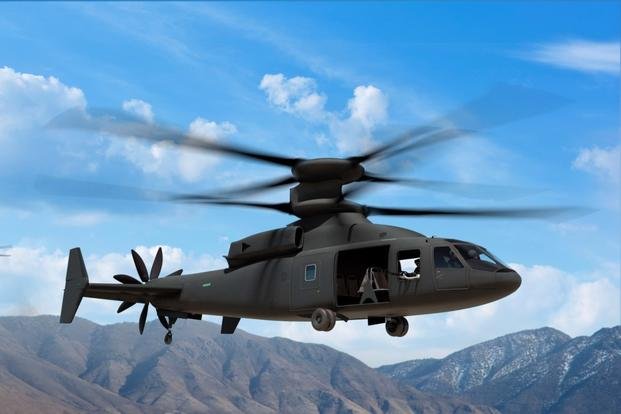The head of the Army's Future Vertical Lift effort said recently the service is not worried that the Sikorsky-Boeing SB>1 Defiant has not conducted its first test flight -- a feat its competitor, the Bell V-280 Valor, accomplished last year.
The service says the Future Vertical Lift, or FVL, will produce a new family of advanced aircraft over the next decade. One of the program's top priorities will be to produce the Future Long Range Assault Aircraft, or FLRAA, Brig. Gen. Wally Rugen, director of the Future Vertical Lift, Cross Functional Team, told an audience at the 2018 Association of the United States Army Annual Meeting and Exposition.
The FVL effort is also scheduled to produce an Advanced Unmanned Aerial System, AUAS, and a Future Attack Reconnaissance Aircraft, FARA, which will work as a team to penetrate gaps in enemy air-defense systems designed to deny entry to key terrain, Rugen said.
That's when the troop-carrying FLRAA will be critical, he added.
"It's the most important priority because, once you open that window, you want to be able to exploit that and project combat power through it," Rugen said. "Once I have penetrated contested airspace with the FARA and AUAS, we think that penetration is going to be fleeting. With FLRAA attributes, we are going to quickly flow through that window of opportunity to project combat power into a place the enemy doesn't want because he has blocked us."
The Army is counting on the Joint Multi-Role Technology Demonstrator program to produce the technology needed for FVL helicopters such as the Future Long Range Assault Aircraft.
In 2014, the service awarded contracts to firms to build tech demonstrators for the JMR-TD program. The Textron Inc.-Bell team built the tiltrotor V-280 Valor, which completed its first test flight in December.
Sikorsky, part of Lockheed Martin Corp., and Boeing Co. built the SB>1 Defiant, which is based on Sikorsky's X2 coaxial design. The Defiant was expected to conduct its first test flight in 2017, but now Sikorsky-Boeing officials predict it will conduct its maiden flight in late 2018 at the Sikorsky Development Flight Test Center in West Palm Beach, Rich Koucheravy, Sikorsky business development director for FVL, told Military.com in an email.
"The Sikorsky-Boeing Defiant aircraft is mostly built, and we have tested nearly all of our onboard systems, to include hydraulics, engines, fuel systems, electrical systems, avionics and some electronically actuated flight control surfaces," Koucheravy said. "We have made great progress this year and expect to fly prior to the end of the year."
Despite the delay, Army officials are still satisfied with Defiant's progress, Rugen said.
"We need them to fly; we need them to prove out more fully their lift-off ... technologies and some of their manufacturing technologies," he said. But, he added, "we have been in close communication with the Defiant team and understand where they are at and what they are doing."
Rugen continued, "I will say that the Army asked them to do some things, and they have, that were pretty challenging technology-wise, and we feel like we can still get all the knowledge we need out of their flight profile."
The Army is now looking to next spring when the analysis of alternatives document for the Future Long Range Assault Aircraft is scheduled to be completed.
Rugen said it is still too early to say whether the service is leaning toward the Valor's tiltrotor or the Defiant's coaxial rotor design.
"We want the most efficient and the most capable platform," he said.
-- Matthew Cox can be reached at matthew.cox@military.com.










